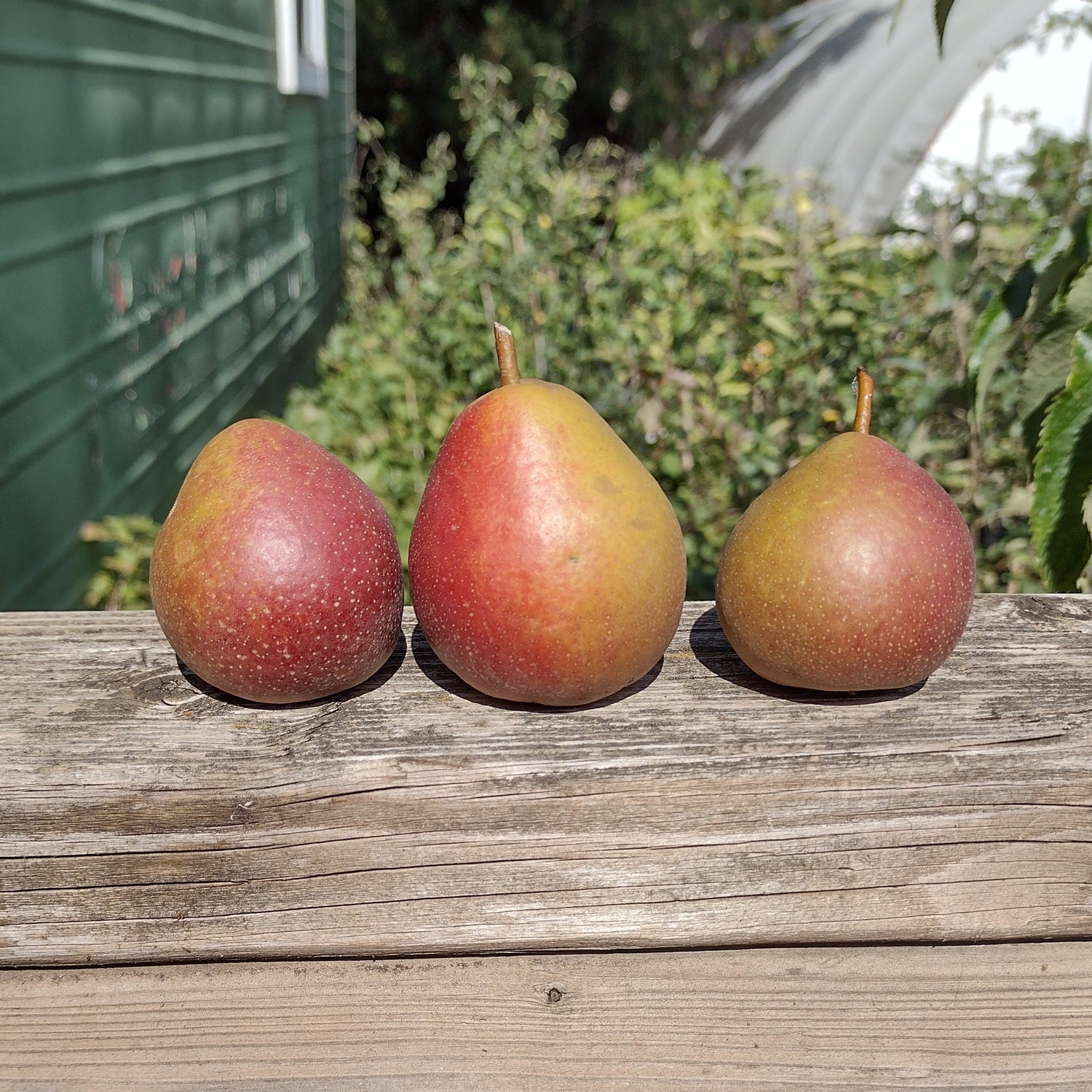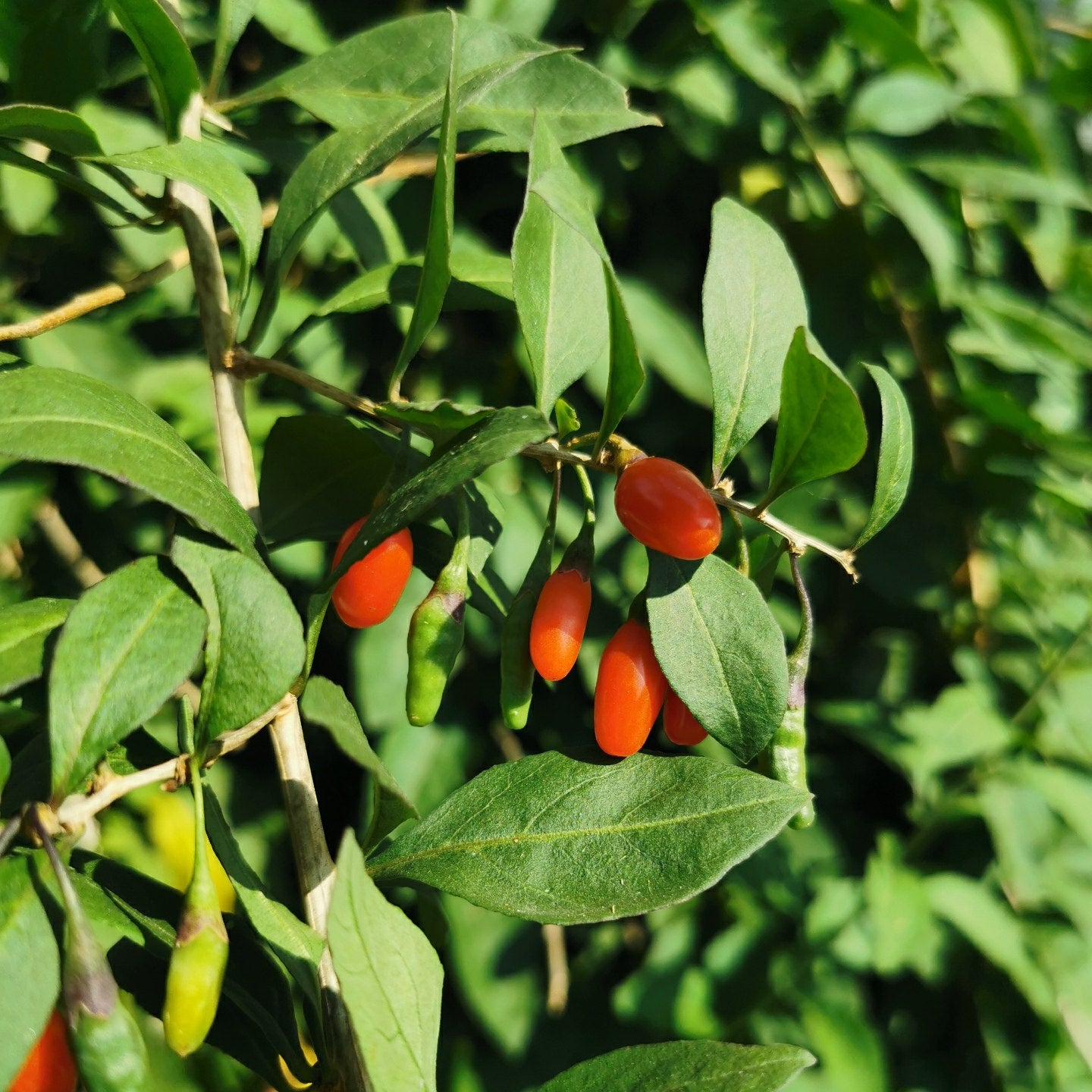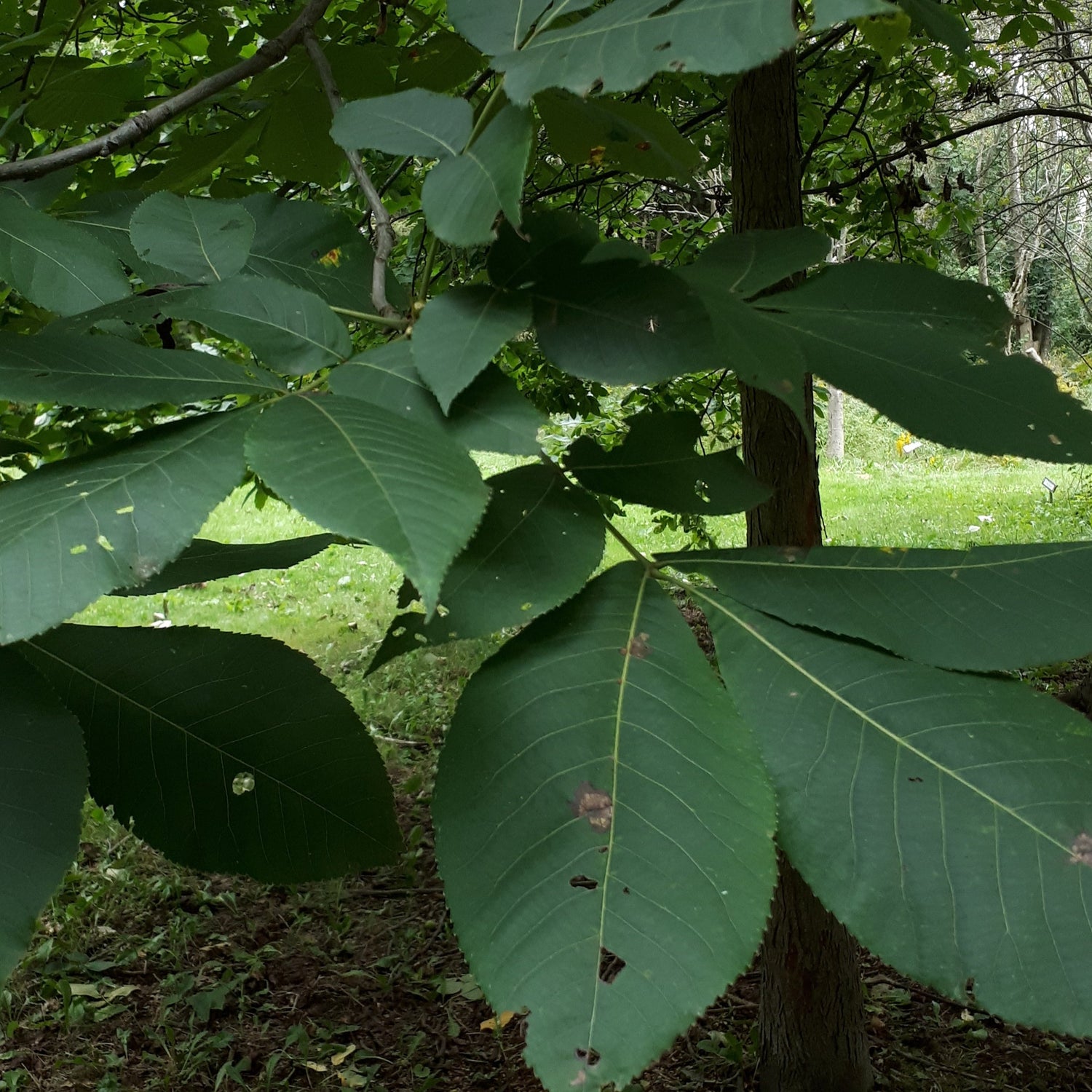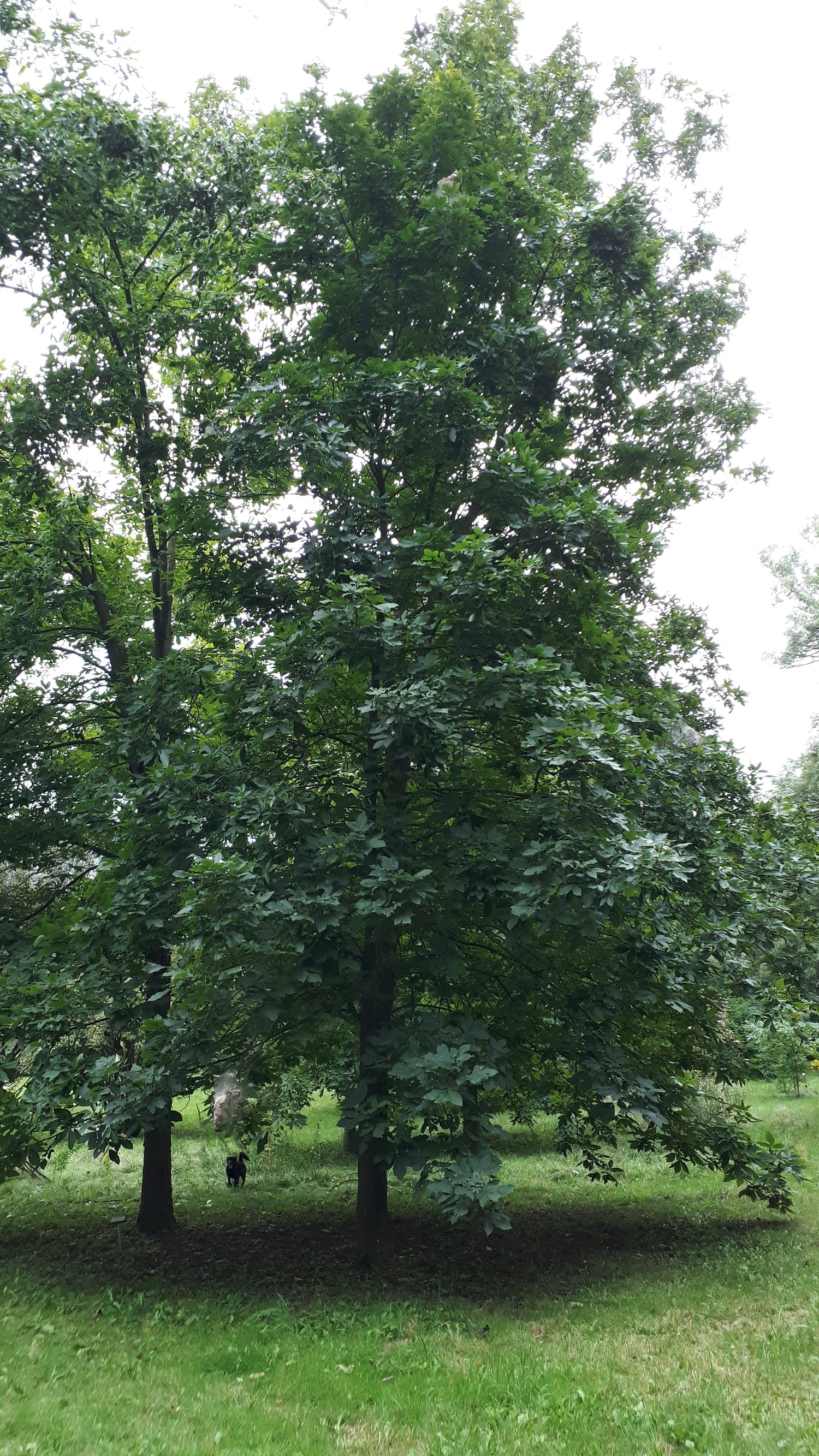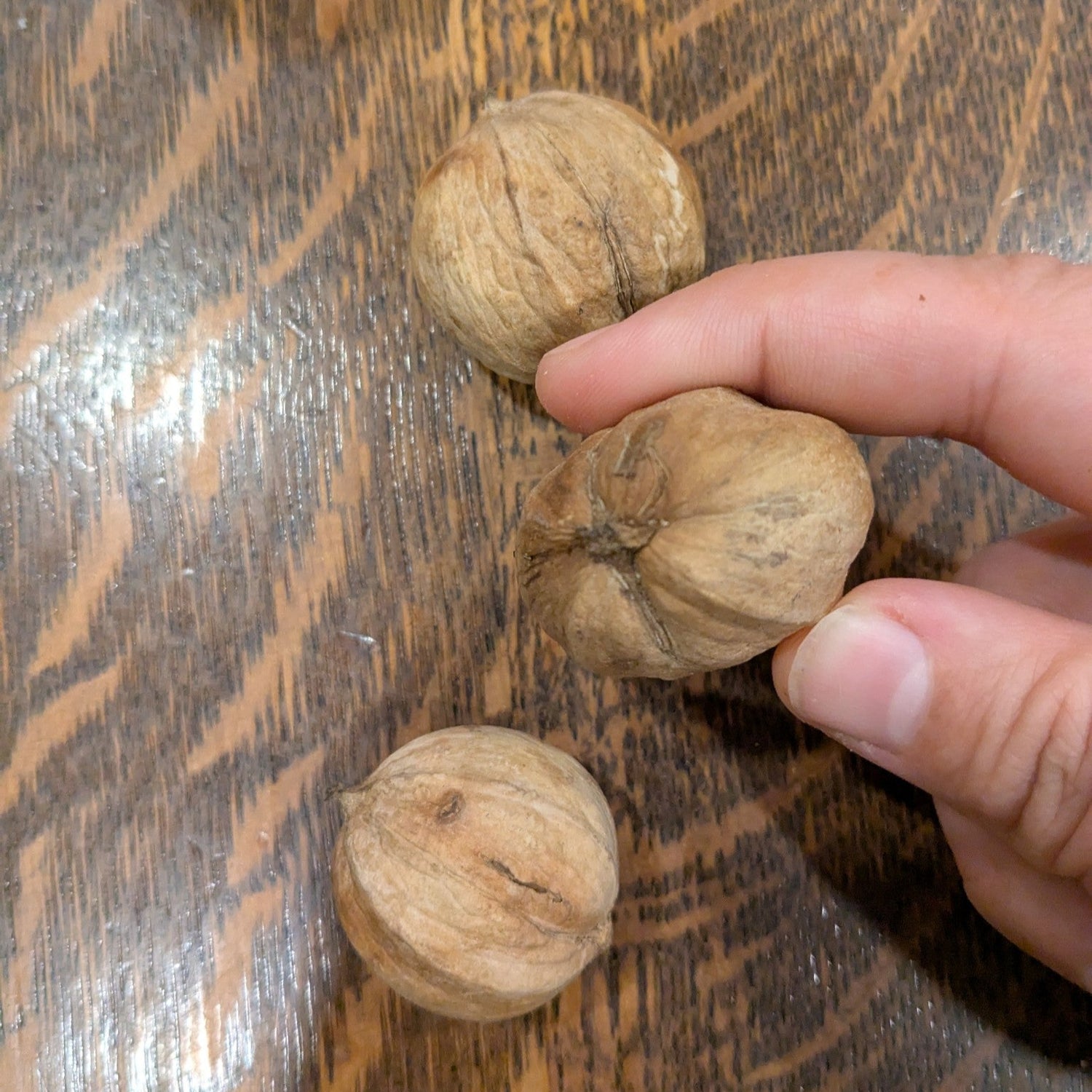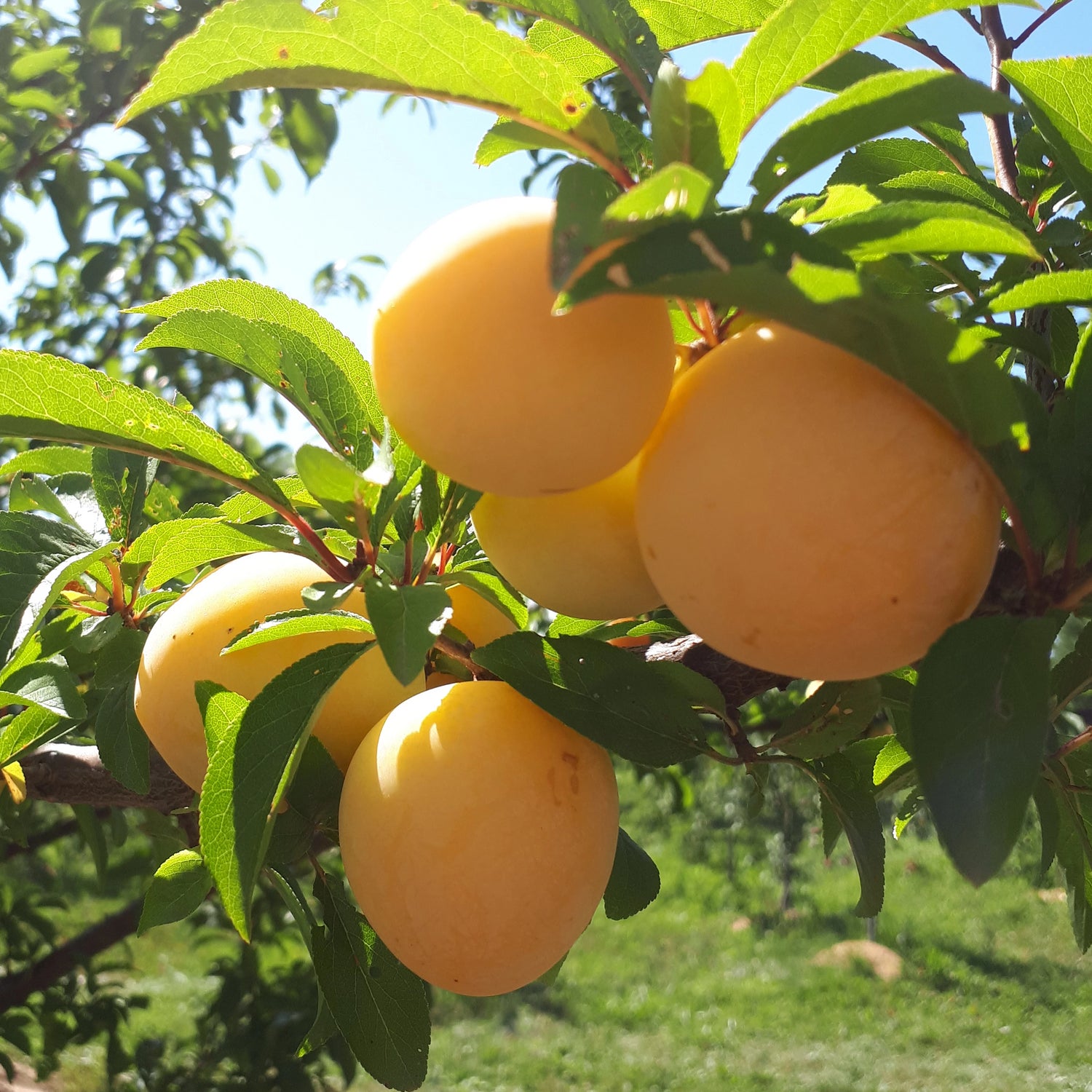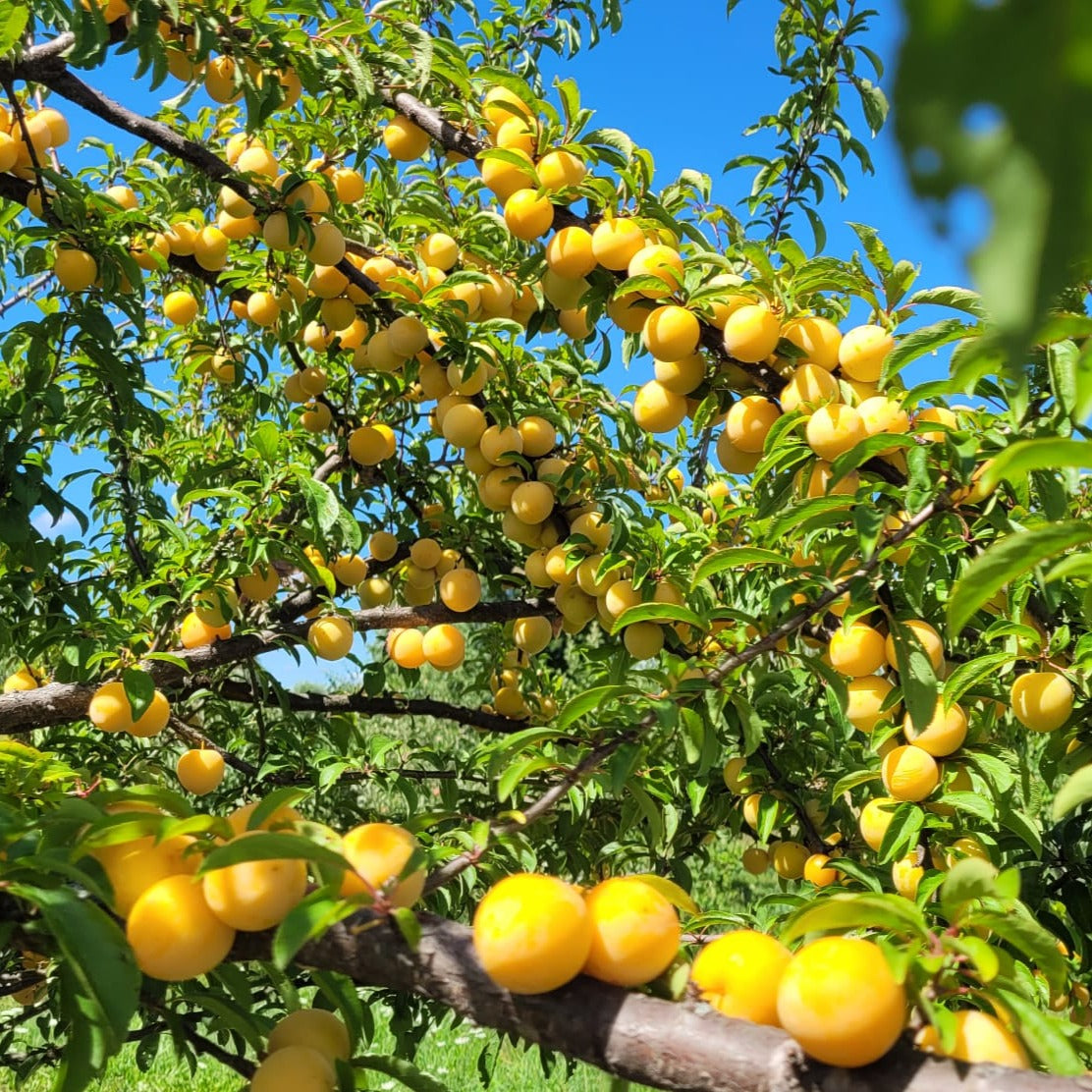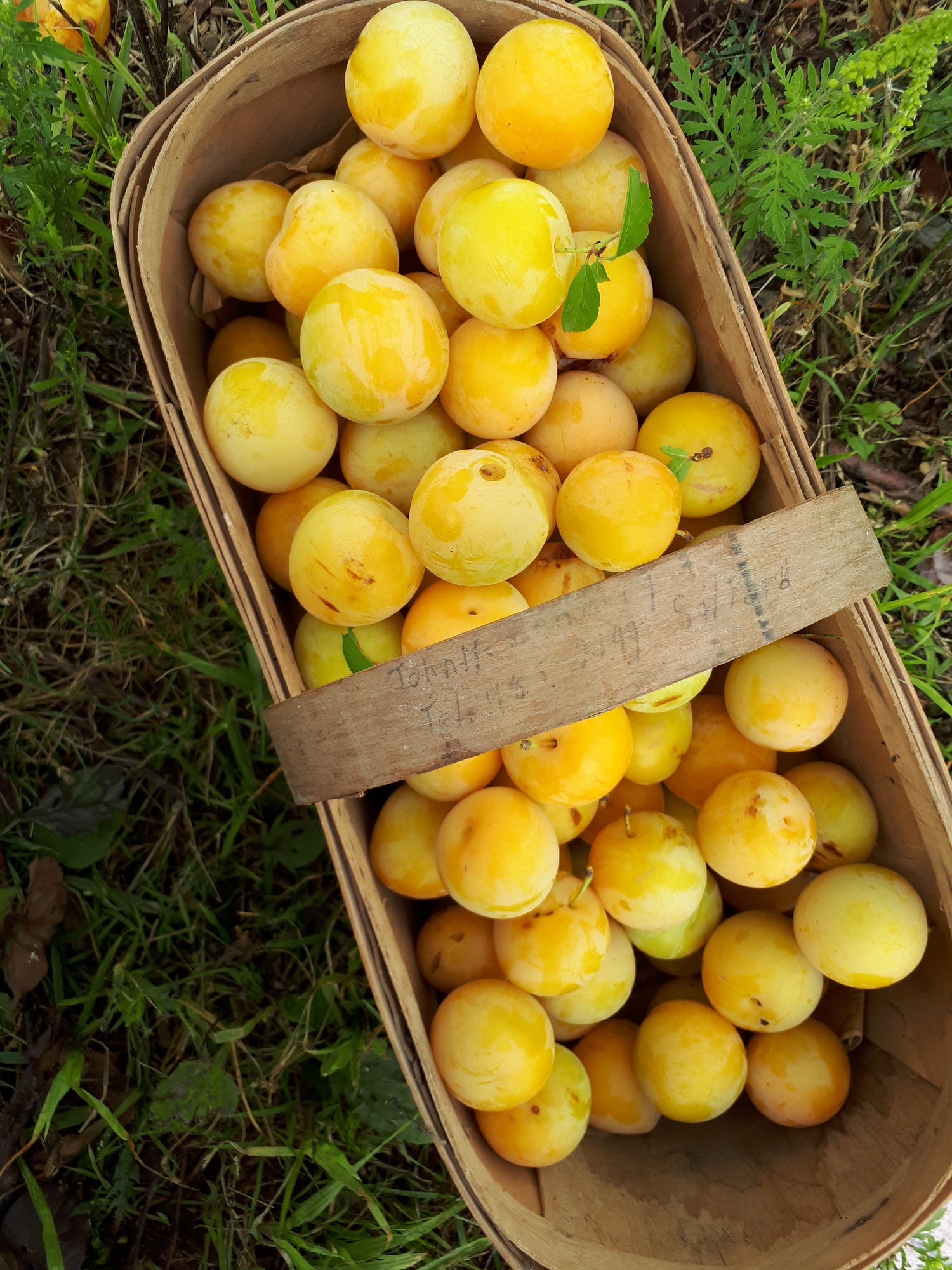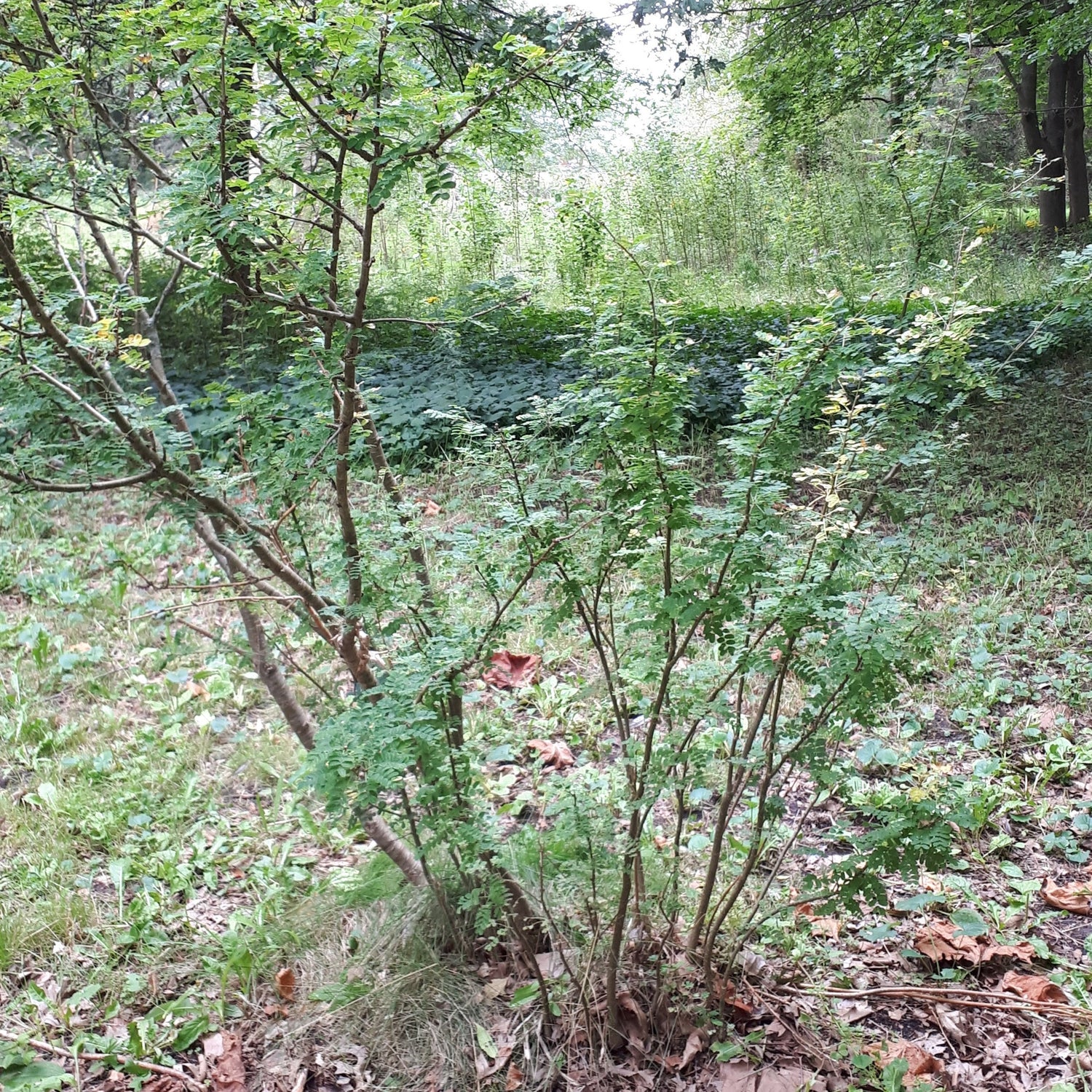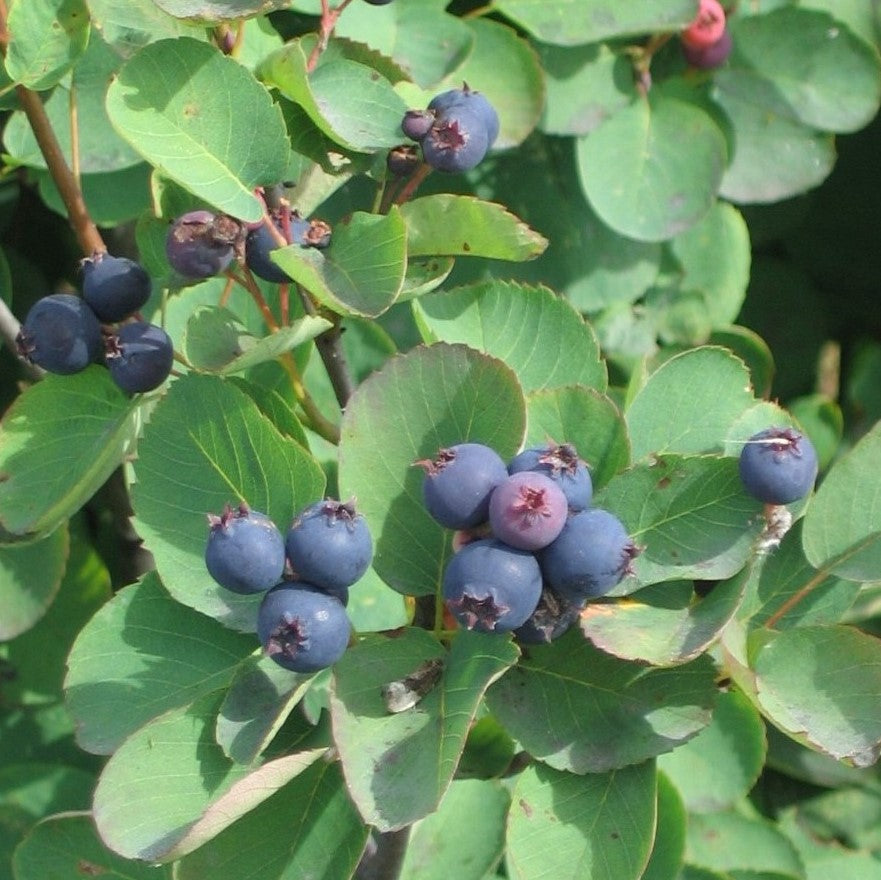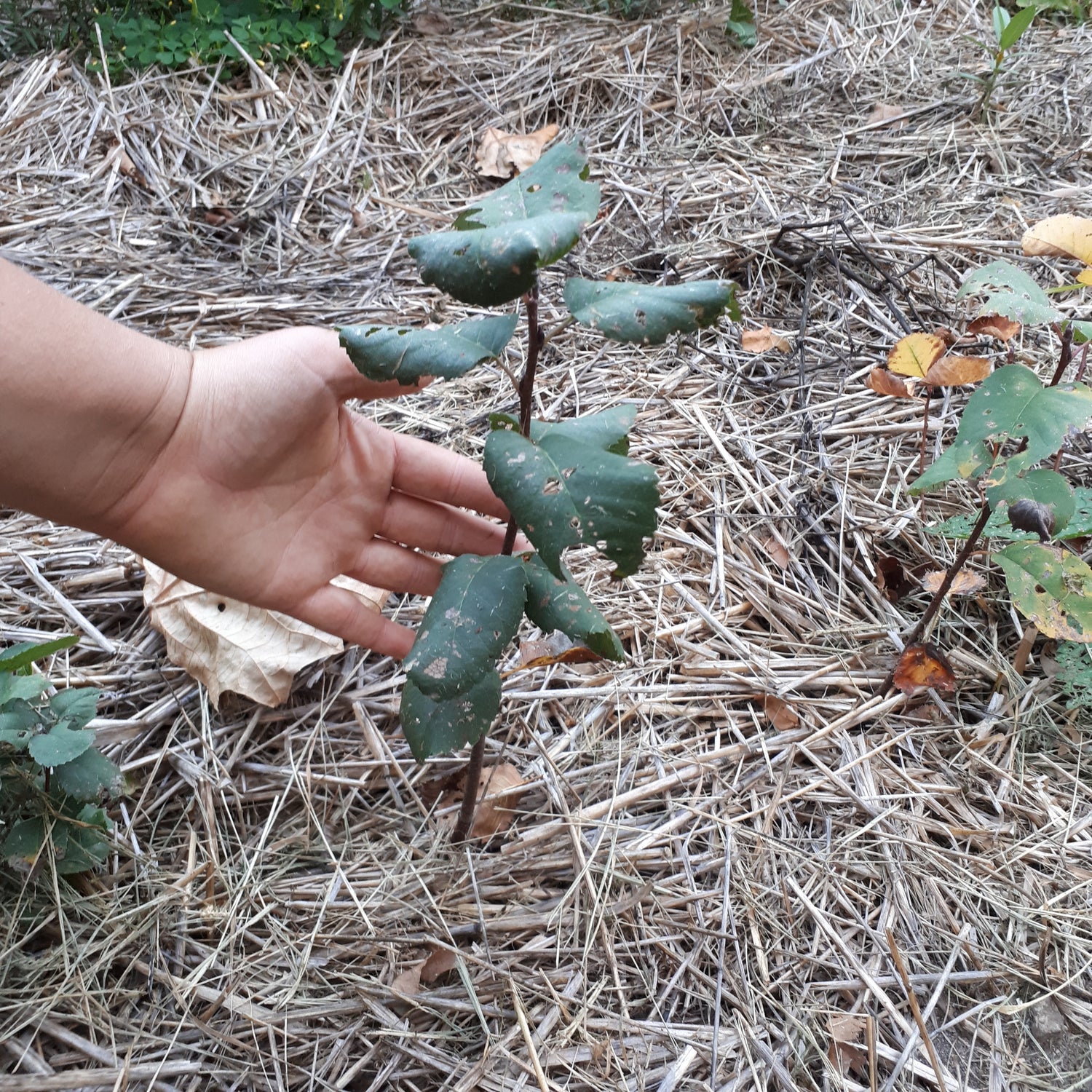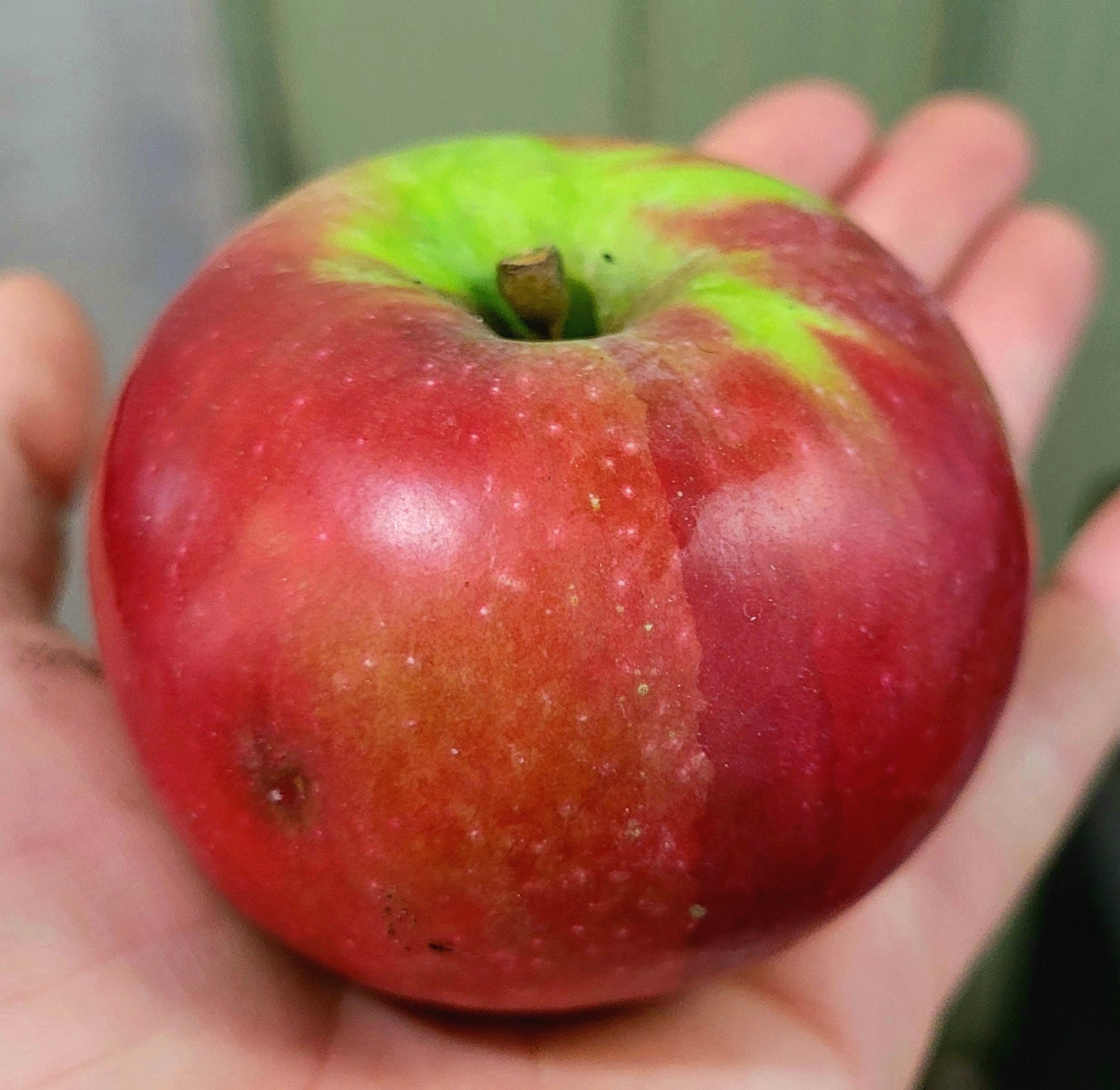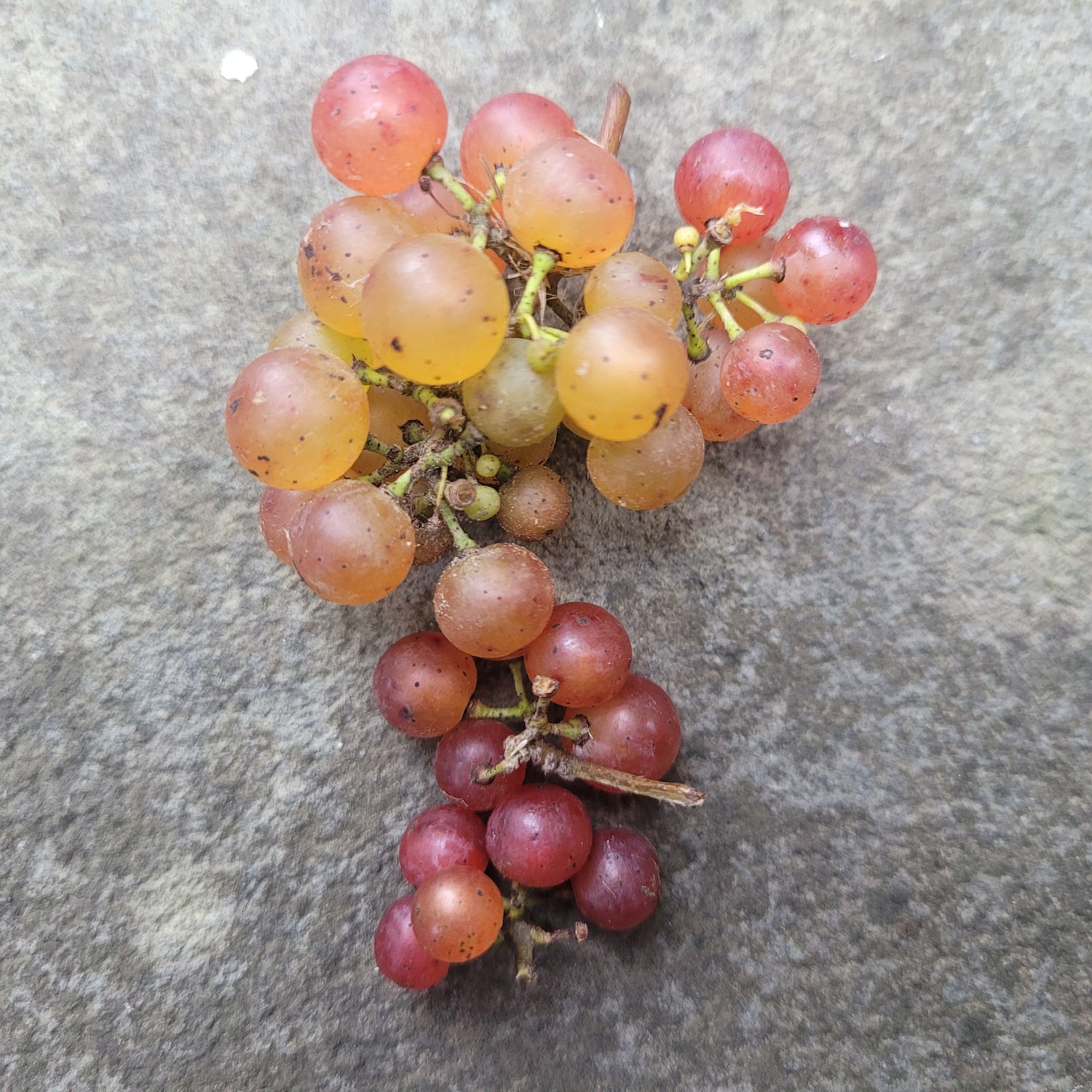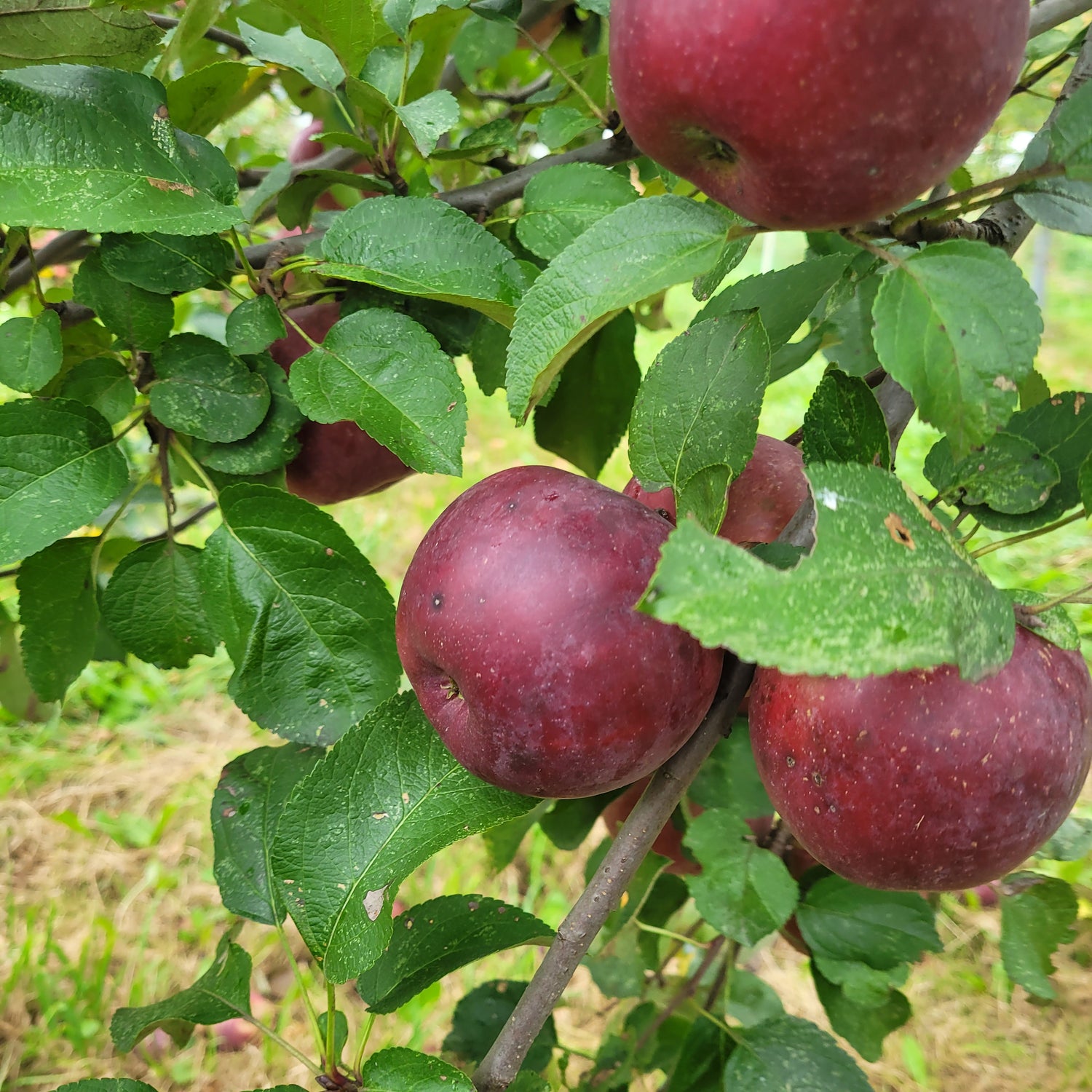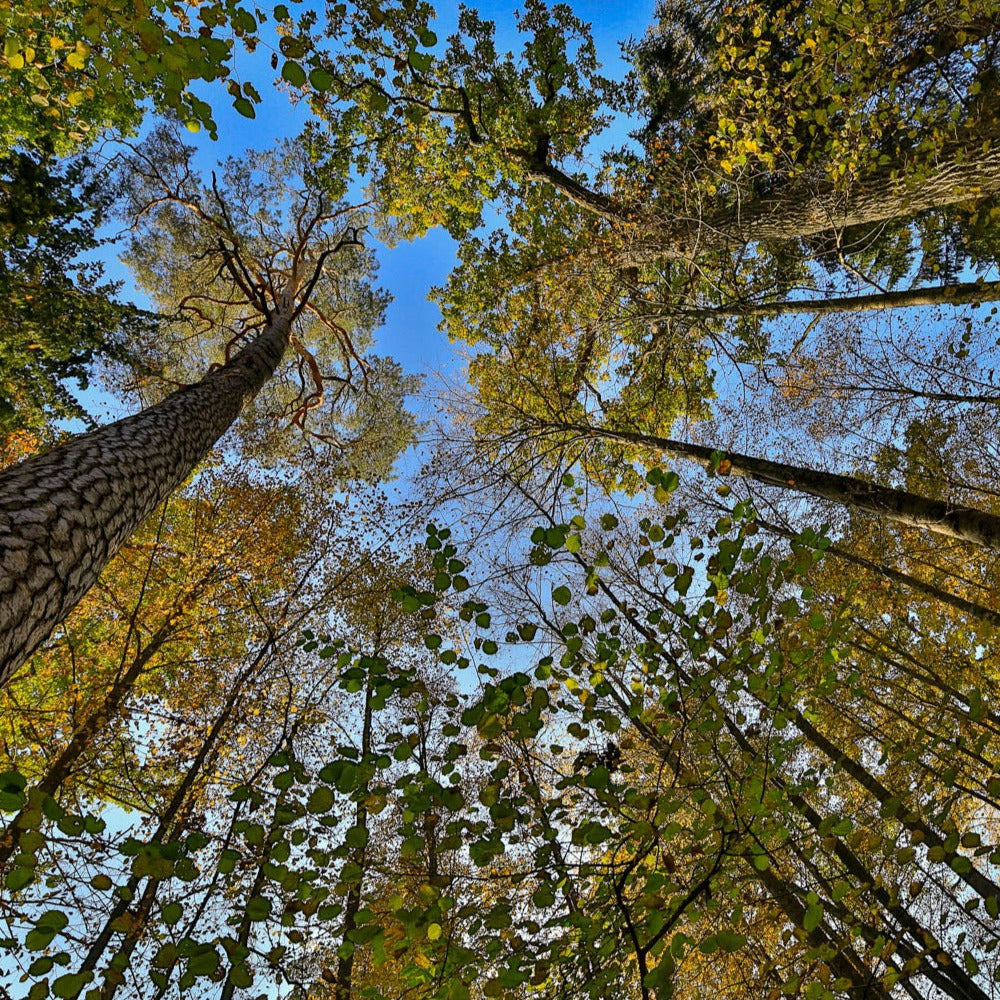Products
Sort by:
475 products
475 products
Species: Hippophae rhamnoides
History: Sea buckthorn is native to parts of Europe and Asia where it has been a source of food, medicine, and fodder for centuries. These seedlings were grown by us so it will be a bit of a surprise to see what the mature plants are like!
Why We Grow It: If you're looking for a dense, fruiting bush, look no further! These cold-hardy plants are grown from seed, and unlike cultivated varieties it is uncertain whether each seedling is male or female. The nodules on their roots help fix nitrogen into the soil, and the resilient plants are salt tolerant. They can withstand the juglones from walnuts and will reach up to 6 meters tall, forming virtually impermeable thickets if left to their own devices. The berries have a wide range of uses and the leaves can be enjoyed in tea.
History: The history of the Seckel pear is somewhat contentious. It was said to have been named after a Mr. Seckel who discovered the variety growing as a sapling near Philadelphia in the late 1700s or early 1800s. Some say it is the only commercial American pear since it was thought to have been a wild seedling but others believe the tree sprouted from a seed left by German immigrants. Either way, this lovely little pear is still grown on a small scale across the States as a specialty fruit.
Why We Grow It: Although it is small in size, this heirloom is popular for eating fresh due to its high quality flavour. The skin is ruddy green with a pronounced red blush and the flesh is very sweet with a spicy flavour, which is why it's sometimes called 'Sugar Pear.' Aside from being excellent for fresh eating, this pear is great canned, pickled, and spiced. As an added bonus, the tree is resistant to fireblight.
Customer Suggestion: One of our wonderful customers shared a recipe for Pickled 'Sickle Pears' (aka Seckel) that had been passed down from his great grandmother. We haven't tested it out yet, but Seckel pears, brown sugar, cinnamon, vinegar and cloves, cooked and marinated, then pickled sounds very intriguing! Thanks for sharing David!
History: Sekai Ichi (translated literally from Japanese as 'world number one,' more accurately meaning 'best in the world') was bred at the Prefectural Experiment Station in Aomori, Japan in 1930 and released in 1974. It is a cross between Red Delicious and Golden Delicious. This variety is quite highly regarded in Japan where a single apple can sell for as much as $25 each. Each apple is hand pollinated, washed in honey, and hand-stamped while being inspected to ensure its quality.
Why We Grow It: Although we don't get quite that fancy here, Sekai Ichi is nonetheless a great apple if you enjoy sweet, crunchy, apples with no acidity, as is common with Japanese varieties. It is red over greenish skin and very large with an average circumference of 30-45cm and average weight of 2lb. The tree itself is very vigorous although slow to start bearing fruit with a tendency towards biennial bearing.
Sepp Holzer farms steep mountainsides in Austria 1,500 meters above sea level. His farm is an intricate network of terraces, raised beds, ponds, waterways and tracks, well covered with productive fruit trees and other vegetation, with the farmhouse neatly nestling amongst them. This is in dramatic contrast to his neighbors’ spruce monocultures.
In this book, Holzer shares the skill and knowledge acquired over his lifetime. He covers every aspect of his farming methods, not just how to create a holistic system on the farm itself, but how to make a living from it. Holzer writes about everything from the overall concepts, down to the practical details. In Sepp Holzer’s Permaculture readers will learn:
- How he sets up a permaculture system
- The fruit varieties he has found best for permaculture growing
- How to construct terraces, ponds, and waterways
- How to build shelters for animals and how to work with them on the land
- How to cultivate edible mushrooms in the garden and on the farm
- and much more!
Holzer offers a wealth of information for the gardener, smallholder, or alternative farmer yet the book’s greatest value is the attitudes it teaches. He reveals the thinking processes based on principles found in nature that create his productive systems. These can be applied anywhere.
Special Bulk Discount: Purchase multiples of this product & enjoy the savings!
Enjoy our bulk quantity discount (see below) and add to cart to see how much you save!
Species: Lycium barbarum
History: Goji berries are native to China where they are an important commercial crop. They spread to the UK in the 1700s where they have remained popular as hedgerows and have become increasingly common in North America due to the health benefits of the berries.
Why We Grow It: Goji berries a.k.a. wolf berries are well known in the health food industry for their high antioxidant levels. The plant grows prolifically, and must be trellised or grown against a wall due to it's weeping growth habit. The fruit itself is sweet, with a mild fruity flavour, however the seeds are a bit bitter and seem to sweeten after a mild frost later in the season. The fruit dries well, and makes for a unique tasting jam!
Species: Actinidia kolomikta
History: September Sun is a Russian variety that was selected for its ample crops of large fruit. Its Russian name is Sentyabraskaya which translates to 'September' in English with a bit of a feminine sound to the name.
Why We Grow It: September Sun is known for producing good-size crops of large, sweet fruits. These grape-like kiwis are a delightful treat for any yard, especially for growers in a colder area! It is also a great ornamental plant, featuring pinkish-white and green variegated leaves.
Species: Carya ovata or hybrid. Our seeds are collected from trees that may have been cross-pollinated by closely related species so the resulting seedlings may be hybrids.
History: Shagbark Hickory is native to parts of southern Ontario and much of the eastern United States. Much more common than the Shellbark Hickory, Shagbark Hickory is an important source of food for many species. Indigenous peoples also used the nuts as a food source and made the kernel milk into various dishes, along with using the wood to make bows. The strong wood is also used to make items such as tool handles and drumsticks that require extra durability. Check out this blog post by one of our customers to learn more cool history about these trees.
Why We Grow It: Shagbark Hickory produces an abundant crop of small hickory nuts every year and the sap can also be boiled for a unique flavored syrup (we haven't tried this yet, but would love to hear about it if you have!). The tree gets its name from the unique peeling bark, adding extra visual appeal wherever the tree is planted.
History: Shamrock apples were raised by K. Lapins at the Pacific Agri-Food Research Centre in 1970 and released in 1986.
Why We Grow It: This is a Canadian apple for all you Granny Smith lovers! Although a bit sweeter than Granny Smith, Shamrock apples still have some tartness and are hardy enough to survive in Canadian climates. They even resemble Granny Smith with their light green skin and white flesh.
Photos courtesy of Shannon McInnis!
Species: Carya laciniosa or hybrid of C. laciniosa and C. ovata
History: Shellbark Hickory can be found naturally growing in scattered pockets of southern Ontario and parts of the northern and central United States. It is relatively uncommon in its native range due to its poor seed dispersal and human activity has made the tree even more rare. A wide variety of wildlife feeds on the nuts, the largest among the hickories, and there are some plantations although it is not commonly grown commercially as the nuts are quite difficult to crack. The wood, which is hard and strong yet flexible, is used to make furniture and tool handles while the inner bark has been used by indigenous peoples to make items such as baskets and snowshoes. Check out this blog post by one of our customers to learn more cool history about these trees.
Why We Grow It: Although difficult to crack, it is worth the effort to access the sweet nuts which are great eaten raw or baked into pies like pecans. The tree itself is quite attractive with unique bark that looks like it is flaking or peeling in strips once the tree matures.
Species: xSorbopyrus irregularis (Pyrus communis x Sorbus aria), also referred to as xSorbopyrus auricularis although this name is no longer correct
History: Shipova is a unique cross between European pears and Common Whitebeam* (Sorbus aria) which readily hybridizes with many other fruiting plants in the rose family. As a surprise hybrid, the history of Shipova is a little foggy. This cross supposedly appeared, or was perhaps planted, at Bollwiller Castle in France in the 1600s and was called Bollwiller Pear. It was cultivated in gardens in the late 1700s and early 1900s. It may have also originated in Yugoslavia and is popular in Eastern Europe today. Shipova was first brought to the US in 1959 and was imported from Yugoslavia. Today, it appears to remain something of a novelty in North America.
Why We Grow It: Shipova is a truly unique fruit tree and it is a shame that it is not grown more commonly. They are quite cold hardy and relatively disease-resistant. The trees produce clusters of small, round fruit that resemble pears. They are dense and crisp with a sweet flavour reminiscent of tropical fruits.
*Many places list Shipova as a cross between European pears and Mountain Ash. More precisely, the genus Sorbus is the Mountain Ash genus and the specific tree that is the parent of Shipova is the species Sorbus aria, commonly known as Common Whitebeam
History: Shiro plums (translated from Japanese as 'white') were developed in California and introduced in 1899. They were bred by horticulturalist Luther Burbank who is renowned for his extensive experimentation with creating new plum varieties. Shiro plums are most commonly grown in the United States and Canada.
Why We Grow It: This early Japanese clingstone variety has yellow skin and flesh that is juicy and sweet. The fruit keeps longer than most plums, lasting two to four weeks, and the tree is known for its compact growth and heavy crops.
Species: Prunus sp
History: These seedlings are grown from Shiro plum seeds collected from our orchard and a Niagara orchard. Shiro plums (translated from Japanese as 'white') were developed in California and introduced in 1899.
Why We Grow It: Seedling fruit trees are a great way to add some diversity and mystery to your garden or orchard! The parent variety, Shiro, has yellow skin and flesh that is juicy and sweet.
Please Note: Since plums tend to stay true to type more than apples, these seedlings will likely bear a strong resemblance to their parent variety. However, any specific information listed on this page should be taken with a grain of salt as there may be some variation from the parent tree.
History: Shizuka (translated as "quiet" or "calm") was created at the Aomori Apple Experiment Station in Japan in the 1930s. It is a cross between Golden Delicious and Indo, the same parentage as its sister apple Mutsu.
Why We Grow It: Although it resembles Mutsu with its large yellow-green fruit, sometimes featuring a reddish-orange blush, Shizuka is sweeter and less acidic. This is an excellent fresh-eating apple for farm gate sales and it also keeps well. It is also great in salads due to its slow browning.
World-renowned expert Martin Crawford covers both common fruit bushes and lesser-known edible shrubs. He takes us on a journey into the world of exotic spice trees, shrubs with medicinal parts, and nitrogen fixing plants. All these can be grown in temperate climates, allowing us to diversify our diets and design beautiful, productive gardens while showing us how we can integrate agroforestry into our smallholdings and farms to create new income streams.
Martin Crawford's expertise has been a great resource for us and much of the information he has collected over the years has helped us to understand our own plants better.
Species: Caragana arborescens
History: As the name implies, Siberian pea shrubs are native to Siberia but also parts of China, Mongolia, and Kazakhstan. They came to the US with Eurasian immigrants who used the pods as a source of food while traveling. It has been planted ornamentally and as bonsai, and can be used as erosion control. It is also unfortunately invasive in some parts of the US.
Why We Grow It: A classic permaculture plant! Siberian pea shrubs are nitrogen fixing, very hardy, disease and drought resistant, and, above all, edible. The flowers and young pods can be eaten fresh while the older pods are cooked. The plants are also attractive to pollinators.
Why We Grow It: Although it failed to take off commercially, Silken is an excellent early fresh-eating apple. It is attractive with pale yellow skin sometimes with a faint pinkish blush. The fruit has crisp, juicy flesh that is quite sweet with a little bit of acidity. The tree grows quickly and tends to start bearing fruit at a young age.
Species: Shepherdia argentea
History: Silver Buffaloberries are native to the southern parts of the prairies, parts of the northern US with scattered populations further south. It is an important source of food and habitat for many species including Saskatchewan's provincial bird the sharp-trailed grouse. It is traditionally used by indigenous peoples in its range as food, seasoning, medicine, dyes, and in coming-of-age ceremonies for girls.
Why We Grow It: Silver Buffaloberries are an excellent addition to native gardens, food forests, and hedgerows! They are tolerant of a wide array of conditions and are also nitrogen-fixing. These shrubs are some of the first to produce flowers each spring, making them good resource for pollinators. The berries, which are often red but may be orange or yellow, are a good source of food for birds later in the season. The edible berries are on the bitter/tart side but are much more enjoyable when made into jams, jellies, and pies! Just be mindful these shrubs are thorny and will spread over time.
Show off your appreciation for holistic gardening/agriculture and Silver Creek Nursery with this bandana! The pattern by Bentley Schieckoff features a variety of the fruits we grow, and our wonderful helpers including bees, worms, and birds!
The bandanas were made in Canada and are a blend of 55% hemp and 45% organic cotton.
History: Skeena was developed at the Summerland Research and Development Centre in British Columbia in 1976 as part of an initiative to create a high quality cherry that ripens later in the season than other varieties. It is a cross between several self-pollinating varieties and was introduced in 2000.
Why We Grow It: These dark red cherries are often considered an improvement over Lapins with their larger size, good firmness, and general ease of harvest due to the spreading way the tree grows. The flavour is sweet with a touch of acidity. The tree itself grows vigorously and tends to start bearing fruit at a young age.
History: In the 1830s in Lancaster County, Pennsylvania, a seedling apple tree grew beside the smokehouse of William Gibbons. Perhaps it sprang from a core that some one had tossed there while they tended the fire. Who knows? What we do know is that the aptly named Smokehouse was commonly grown in the area until its popularity waned as sweeter apple varieties appeared on the market. Still, this variety has stood the test of time due to its great flavour.
Why We Grow It: Traditionally Smokehouse apples are picked a little early and used for baking, but if they're allowed to ripen fully on the tree, some people have described the balanced flavour as being “like drinking fresh-pressed cider!”.
Species: Amelanchier alnifolia (aka Western Serviceberry)
History: Smokey (sometimes spelled Smoky) likely originated in Alberta. This productive variety was once the main cultivar grown in Canada commercially.
Why We Grow It: Smokey saskatoon berries are optimal for the fresh eating market with a mild sweet flavour. These berries are a great substitute for blueberries. Smokey is one of the best yielding varieties, and grows up to 12 feet tall. Saskatoons by nature are slow growing, and while they will bear fruit in 1-3 years, it can take up to 15 years for a full crop.
Photo by Cindy Malette from Burst
History: Snow, aka Fameuse, apples originated near Lake Champlain in Quebec some time before the 1730s. The exact origin is unclear but this variety is thought to have originated from a seedling or cutting brought from France. From about 1750-1850, this was one of the most commonly grown apples in Quebec until the orchards were almost wiped out in the latter half of the 19th century by disease and failed to regain their popularity. However, these lovely apples may still be with us in their own way as they are one of the potential parents of McIntosh.
Why We Grow It: It is easy to see why Snow apples were once so popular. These apples have a lovely deep red skin with pure white flesh with a sweet strawberry flavour. These trees are also quite cold hardy and produce heavy crops.
Phosphorous is one of the most important nutrients required by plants, aiding in root growth among other aspects of plant development! Soft rock phosphate, aka colloidal phosphate, comes from clay collected from basins of former hard phosphate mining operations. The clay nature of this product means it does not leach out of the soil due to water, allowing it to better stay in place and remain accessible to plants.
Application Rates:
- About 1 cup per tree dusted into backfill soil when planting. One bag has around 5 cups (2kg).
- Light Applications: Apply 3.2kg per 1,000 square feet, ¼ cup per plant, or 0.45kg per 20 foot row of vegetables.
- Normal Applications: Apply 5.5kg per 1,000 square feet, 1/3 cup per plant, or 1kg per 20 foot row.
Working with Nature to Build Soil Health
Healthy soil means thriving plants. Yet untangling the soil food web and optimizing your soil health is beyond most gardeners, many of whom lack an in-depth knowledge of the soil ecosystem.
Soil Science for Gardeners is an accessible, science-based guide to understanding soil fertility and, in particular, the rhizosphere – the thin layer of liquid and soil surrounding plant roots, so vital to plant health.
Robert Pavlis, a gardener for over four decades, debunks common soil myths, explores the rhizosphere, and provides a personalized soil fertility improvement program in this three-part popular science guidebook. Coverage includes:
- Soil biology and chemistry and how plants and soil interact
- Common soil health problems, including analyzing soil's fertility and plant nutrients
- The creation of a personalized plan for improving your soil fertility, including setting priorities and goals in a cost-effective, realistic time frame.
- Creating the optimal conditions for nature to do the heavy lifting of building soil fertility
Written for the home gardener, market gardener, and micro-farmer, Soil Science for Gardeners is packed with information to help you grow thriving plants.
Publisher: New Society Publishers
Pub. Date: 2020-04-07
ISBN: 9780865719309
Format: Paperback - 224 pages
Size: 6" x 9" (w x h)
Internationally-respected peace and environment activist Satish Kumar has been gently setting the agenda for change for over 50 years. As 350.org founder Bill McKibben says, "There is no one on the planet better-equipped to make you think and rethink how you're living and how you might change."
The age of sustainability is grounded on the knowledge that we ourselves are very much part of nature; that what we do to nature we in fact do to ourselves; and that the earth has a soul, which we share. Drawing on the example of Rabindranath Tagore, Kumar advocates living with awareness that our personal choices have political and poetic resonance. In this book, he inspires readers with the knowledge we are all leaders and can create change in our structures and mindsets for lasting peace and a sustainable culture and society. Celebrating an emerging global consciousness that reveres nature, the book explores how, as a global society, we need to embrace diversity and be aware of our role as pilgrims on this earth. Joyful and heart-centered, Satish Kumar reminds us that to bring about change in the world, we must embody the change we wish to see.
Species: Vitis labrusca x Vitis riparia x Vitis vinifera, and small amounts of other species of different Vitis from North America
History: Bred by Elmer Swenson in Wisconsin, Somerset is one of numerous varieties he created for growing in our cooler North American climates. This cultivar has become increasingly popular in recent years and has good potential for commercial growing. The variety was released in 2002.
Why We Grow It: One of the hardiest, highest quality seedless grape varieties out there, this is an excellent table grape: sweet, spicy, with strong notes of strawberry. The grapes have beautiful pink flushed skin and are most decadent if allowed to sit on a sunny window sill for a week or so after harvest. Although the fruit is on the smaller to medium end of the scale, the vines produce large, heavy clusters that more than compensate for the size of the individual grapes. The grapes have a firm texture with some crunch.
History: Spartan apples are a Canadian variety that was developed at the Pacific Agri-Food Research Centre in Summerland, BC in 1936 by Dr. R.C. Palmer. Of particular interest is the fact that Spartan apples are the first apple variety created by a formal scientific breeding program. They have been popular in North America ever since and are even commonly found in gardens in the UK.
Why We Grow It: This variety is known for its sweet/acid flavour and pleasant crunch, especially when eaten fresh off the tree. They tend to soften rather quickly after they are picked but luckily the fruit hangs on the tree 2-3 weeks after its ripe which helps to extend the optimal time to enjoy this variety. Spartan apples are also known for being relatively easy to grow, having decent disease resistance, heavy crops, and an ability to keep all winter.
Species: Alnus incana (likely subsp. rugosa)
History: Native to large portions of the Northern Hemisphere including parts of North America, Europe, and Asia, this widespread tree is often divided into six subspecies. We likely offer Alnus incana subsp. rugosa but with seedlings it is hard to say for sure. Indigenous people have used these trees for medicine and dyes, and they can also be used for erosion control. This subspecies in general is unique for its cold hardiness and ability to fix nitrogen, making it a useful companion plant in permaculture settings.
Why We Grow It: Named for the white lenticels that dot the reddish-gray bark, Speckled Alders can make a useful addition to a permaculture with their ability to fix nitrogen. However, keep an eye on this tree as it tends to spread via suckering (sending up new shoots) and layering (branches rooting into the ground) and can form dense thickets.


